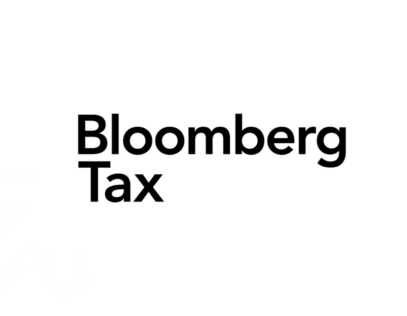In creating Pillar One, the Organization for Economic Cooperation and Development (OECD) sought to ease administrative costs and uncertainty for some routine marketing and distribution activities—this “simplified and streamlined approach” is known as Amount B. The formula seeks to establish a standardized baseline return for activities within its scope and offer a uniform and geographically consistent method to assess these transactions. By doing so, the policy should reduce needless disputes and free up administrative resources for both tax administrations and taxpayers.
But while the policy may remove ambiguities and uncertainties in the process, the mechanical approach for Amount B is still complex and novel. Its formula will differ depending on characteristics of the countries involved in the transaction—a divergence from traditional global arm’s-length transfer pricing—causing a troublesome compliance burden for practitioners.
To help untangle the knots and clarify how Amount B should be applied, the OECD released new guidance in June, offering criteria for determining jurisdictions where the new method will include additional steps. In theory, this new aspect promises to answer the needs of tax enforcement in lower-income countries and the realities of available data. While Amount B’s fate remains uncertain, the OECD and the 140-nation Inclusive Framework continue negotiations—and face the challenge of creating a formula that will be perceived as fair across the globe.
Digital and Routine
The original point of Pillar One was to provide an alternative to digital services taxes (DSTs), and other unilateral levies which countries have imposed on revenue gained from certain online activities. Amount A, the primary Pillar One component, grants market countries more taxing rights over transactions in their jurisdictions, even if the taxpayer is not physically present. It could prevent trade tensions between countries with DSTs and the United States, which views those as an attack on the American technology industry.
Amount B was added to the Pillar One project as a way to make the overall initiative more enticing to both corporations and developing countries, amid fears that they could oppose the effort. While part of the same project, Amount B doesn’t have much to do with online activities. In fact, it’s meant to capture transactions at the opposite end of the spectrum—relatively routine and uncontroversial marketing and distribution arrangements that nevertheless can get caught up in disputes. These setups are often present in less-developed market countries, where access to comparable transactions is limited. Given that these structures are normally (though not always) considered to be non-abusive and an insignificant source of base erosion, agreeing on pre-set prices could free up resources for cash-strapped tax administrations to focus on other areas. Corporate taxpayers would then have the benefit of reliable pricing and lower audit risk. In a global tax landscape where governments and taxpayers aren’t often on the same page, Amount B could be a rare win-win situation where everyone ends up ahead–if it can work successfully.
The Formula
Amount B applies only to “baseline distributors,” which it identifies through a series of tests meant to exclude those that make “unique and valuable contributions.” One condition is that Amount B can only apply to arrangements where a one-sided transfer pricing method such as the transactional net margin method can apply. Overriding the objections of the business community, developing countries pushed the OECD to exclude digital goods from the scope.
Through a “pricing matrix,” the Amount B formula determines a return percentage that can be allocated to the distributor, using factors such as the “return on sales”—the distributor’s earnings before interest and taxes (EBIT), divided by its revenue. It also takes into account the company’s tangible and intangible assets (excluding goodwill) and the category of goods.
One step in the process is the “operating expense cross-check,” which identifies an appropriate range for the outcomes. It uses operating expenses, or overall costs minus the cost of goods sold and other factors, rather than EBIT as the reference point. The cross-check triggers an adjustment if the results of the two formulas are outside a certain range (the operating expense “cap and collar”).
Adjusting the Data
The operating expense cross-check includes a “data availability mechanism,” an upward adjustment for the distributor in cases where the jurisdiction is underrepresented in the global dataset of existing baseline distributors that was used to construct the Amount B formula. In the June guidance, the OECD also announced that the cross-check would include an adjustment for “qualifying jurisdictions,” which includes low-income countries where the likelihood of operating expense adjustments was more likely. While the Inclusive Framework members could not agree on whether the increase in adjustments was an unfair disadvantage, or simply a reflection of economic realities, they agreed to a compromise that created an upward adjustment.
In both of the above cases, the OECD uses indicators of lower-income countries. For jurisdictions that qualify for the data availability mechanism, the OECD looks at both the number of comparable companies in the global dataset as well as the country’s long-term sovereign credit rating. For the second adjustment, involving jurisdictions with a higher likelihood of operating expense adjustments, the OECD uses the World Bank Group’s definitions of low–, lower-middle, and upper-middle-income countries.
Through these definitions, the OECD produced two largely overlapping lists of jurisdictions, largely comprising developing countries as well as those often classified as “emerging,” such as Brazil and China. The OECD said it will update the list every five years.
Tail-end Taxes
The Amount B examples aren’t the only times that Pillar One applies differently, based on which jurisdiction it applies. Amount A also would allocate some unsourced “tail-end” revenue to lower-income countries. The draft multilateral convention to implement Amount A, released in October 2023, states that revenue from sales through an independent distributor with an undetermined source would be formulaically allocated to lower-income countries. The formula would also include countries based on their World Bank Group rating based on gross national income per capita.
However, India and Colombia objected to the definition, and the OECD has not yet issued final language of the agreement at the time of this writing.
The Waiting Game
Many uncertainties about the Amount B process remain as tax administrations and practitioners await to see if the OECD can produce a final product. One of the remaining issues to be determined is whether the participants will agree to the United States’ demand that Amount B is mandatory for countries as a condition of participating in the global agreement to implement Amount A. The treaty is necessary because Pillar One would otherwise violate existing double tax treaties. Whether Amount B is implemented uniformly across the globe or piecemeal as an optional policy could greatly affect how it works in practice.
But because the United States is unlikely to ratify an OECD treaty in the near future–it would require two-thirds approval from the sharply divided Senate–the discussion may end up being theoretical. Even if other countries sign on, the treaty’s rules prevent it from going into effect without ratification from the U.S., due to the size of its economy. While the Biden Administration continues to push for the agreement, strong opposition from Republicans in Congress would make ratification very difficult in the current political environment.
An Uncertain Future
This doesn’t mean the exercise has been fruitless. Given that so many countries have expressed interest in the Amount B policy, there may be a movement to implement it outside the OECD project. Individual countries could consider how to include aspects of the policy in their own international tax practices and enforcement–although the OECD guidance makes clear that none of Amount B should be used to interpret the arm’s–length principle.
Therefore, it is still worth considering the implications of the OECD proposal. One of the justifications for Amount B is the lack of sufficient comparable transactions in the relevant jurisdictions. But the lack of data has also forced the OECD to include seemingly arbitrary adjustments that only apply in certain jurisdictions. This may remove some ambiguity, but it also creates some mechanical (and political) uncertainties. The potential repercussions of the formula may not be clear until it has been used for some time by tax administrations.
One of the enduring consequences of Amount B could be to pressure taxpayers and tax authorities to re-examine whether existing international tax rules may be able to more precisely price these structures with better data and comparables analyses. Especially if Amount B is used by countries as an optional safe harbor, perhaps tax administrations will find that the traditional transfer pricing tools were up to the challenge all along.










